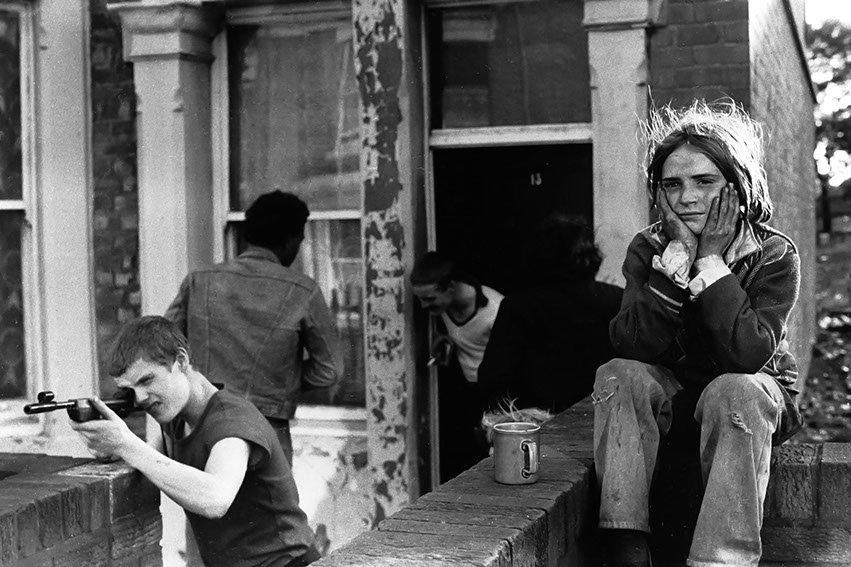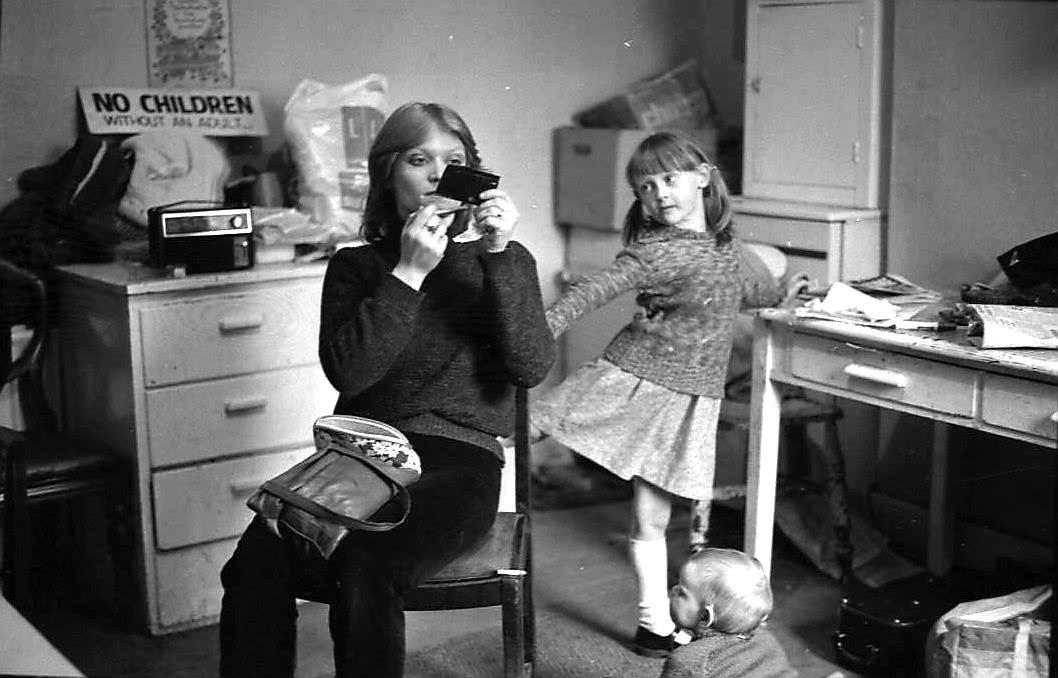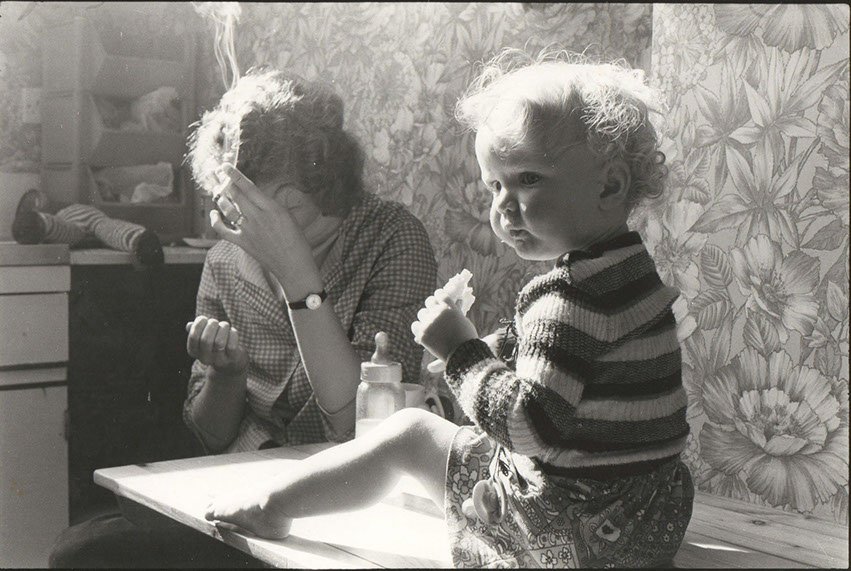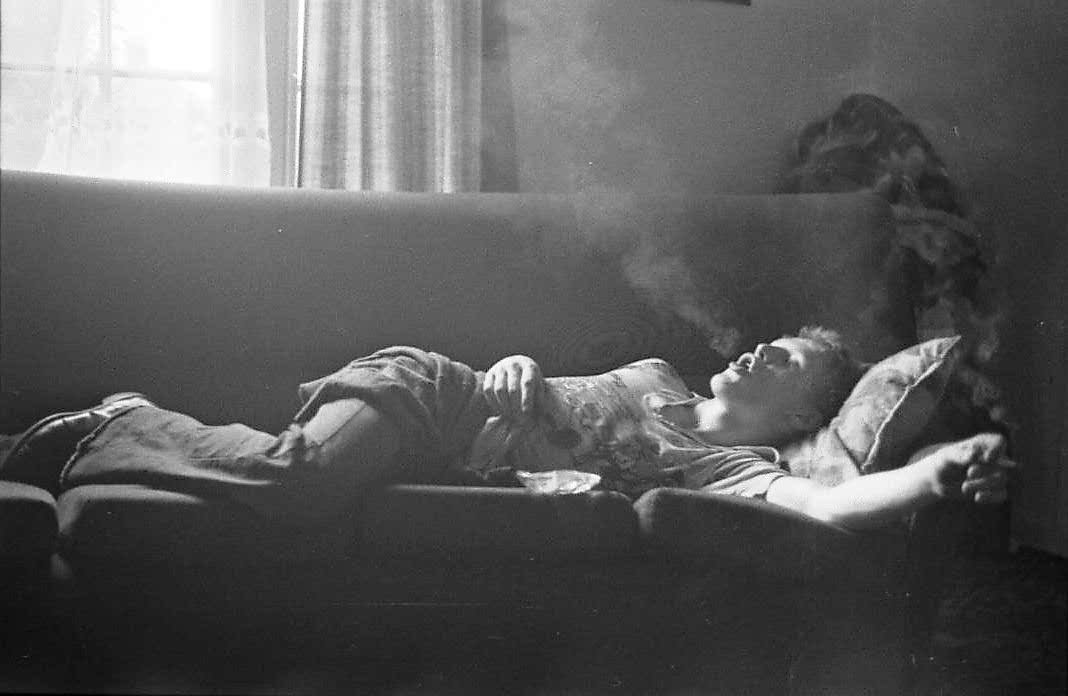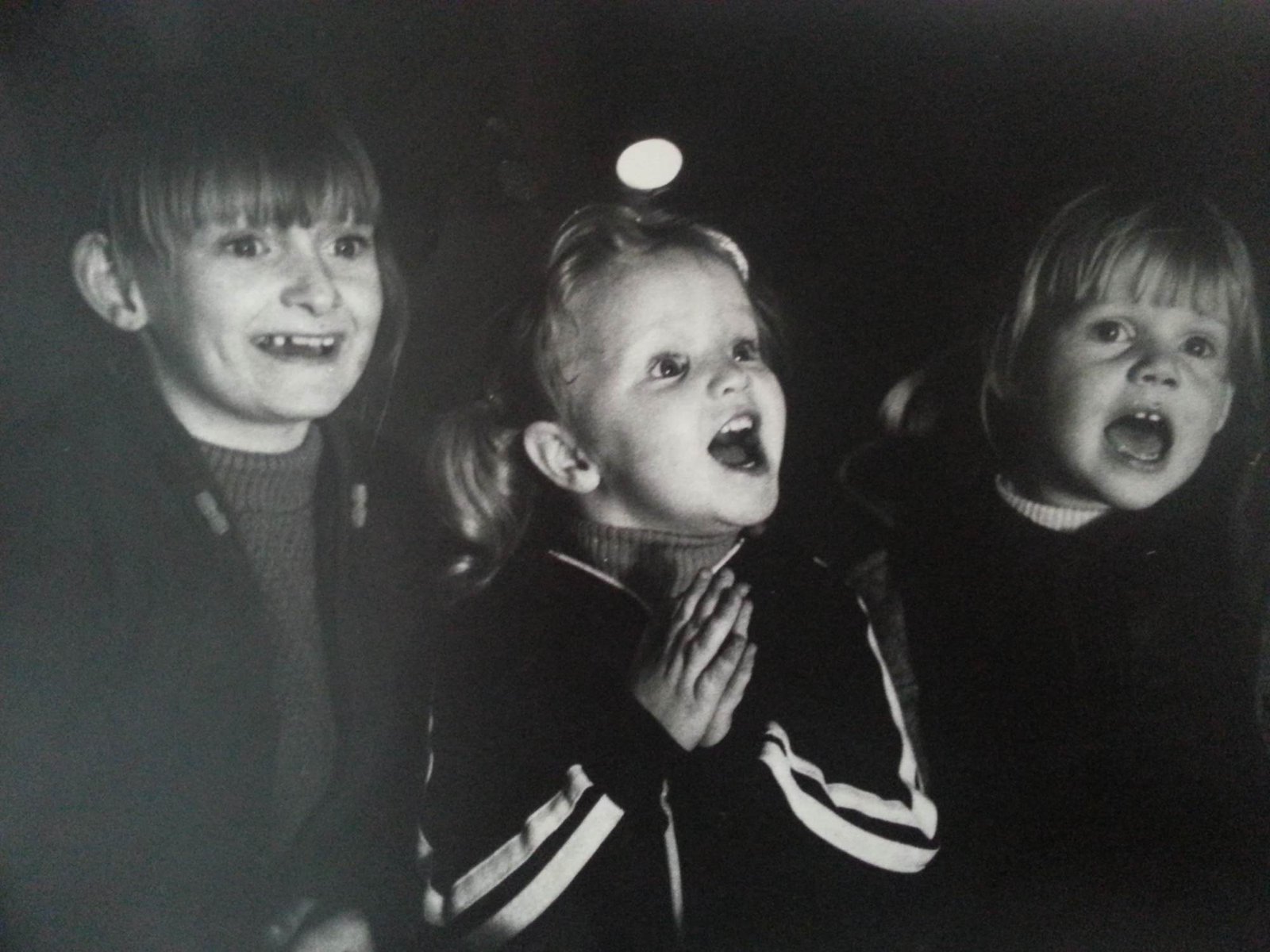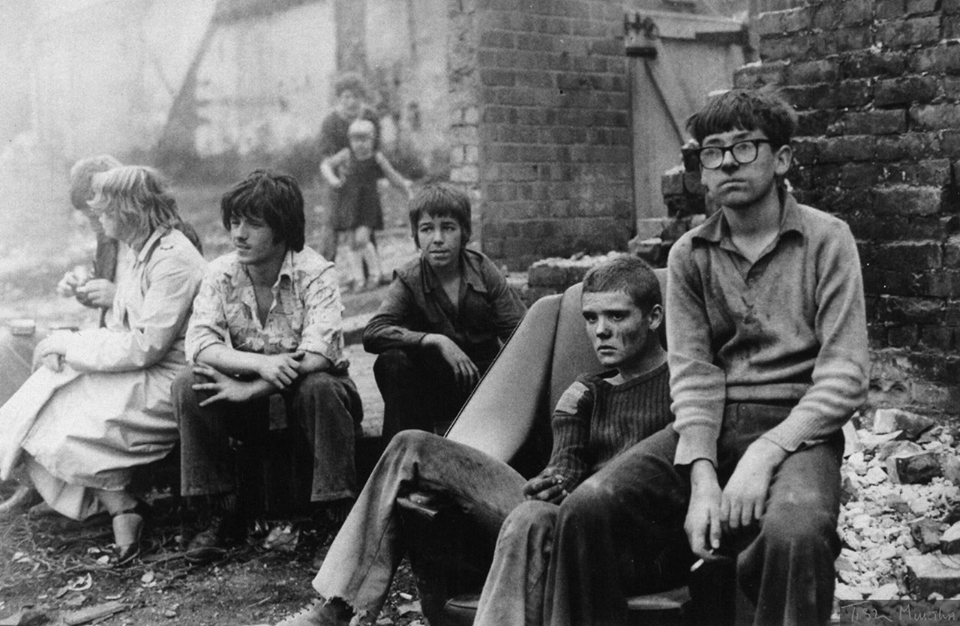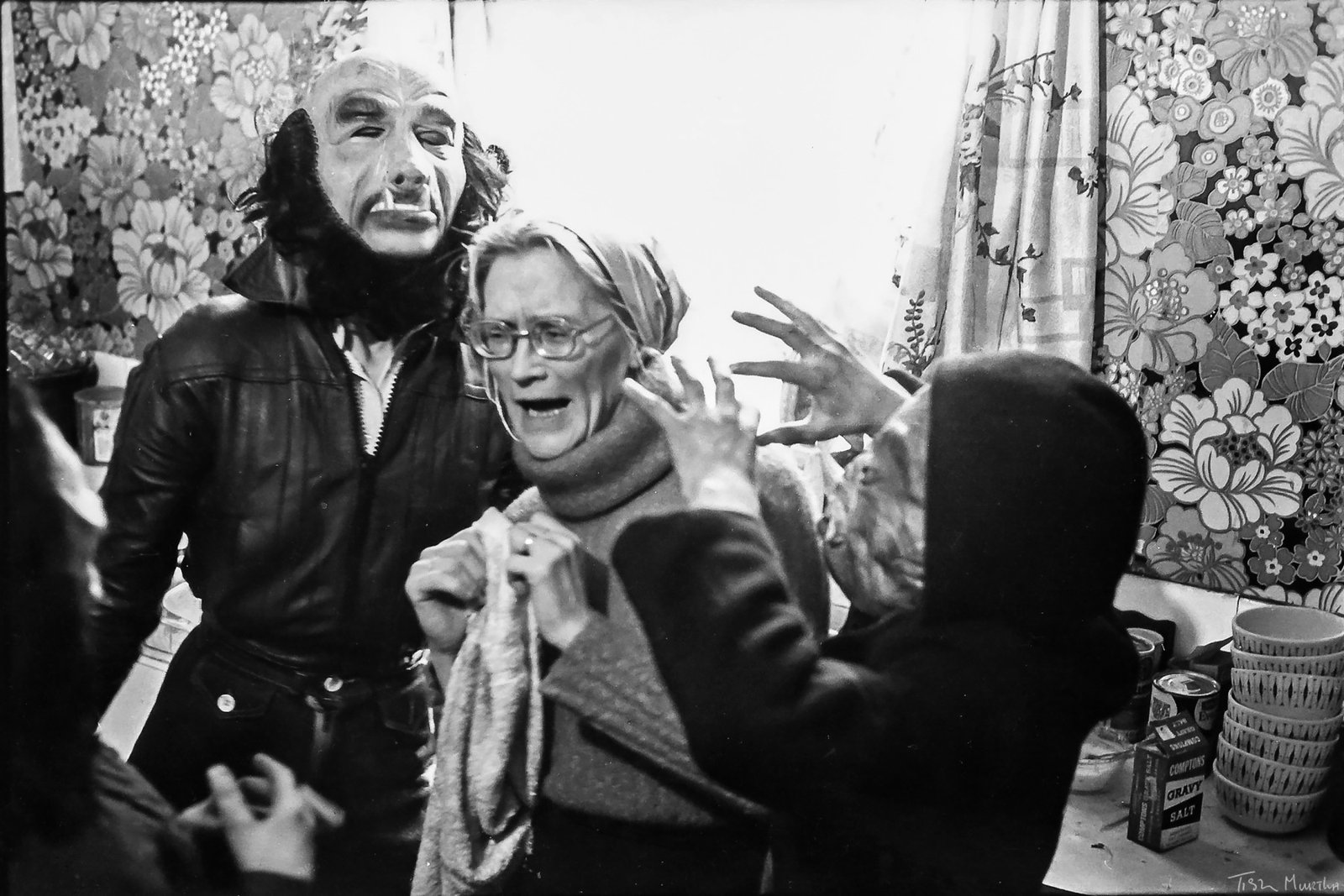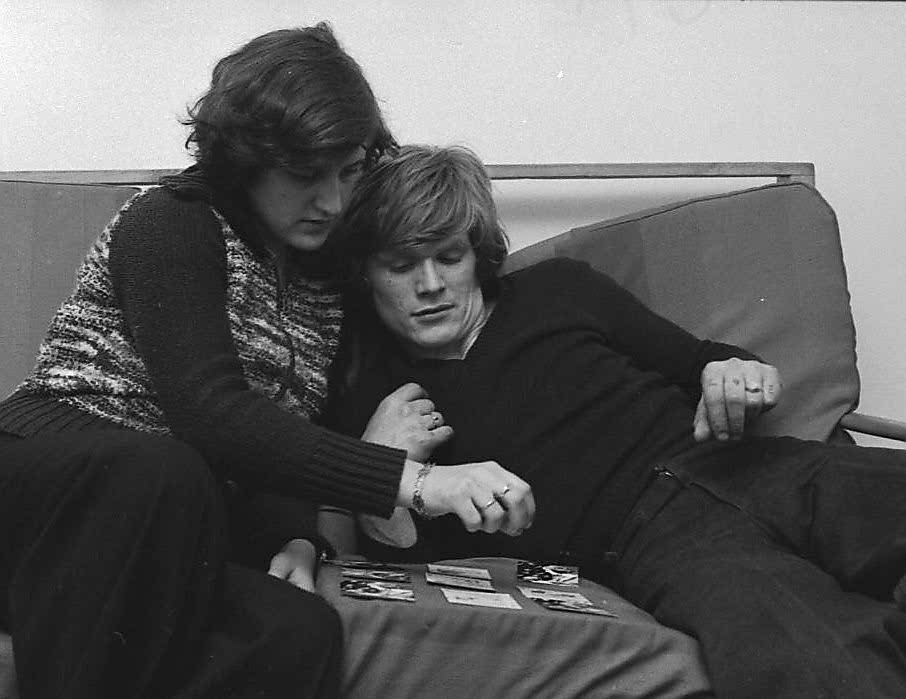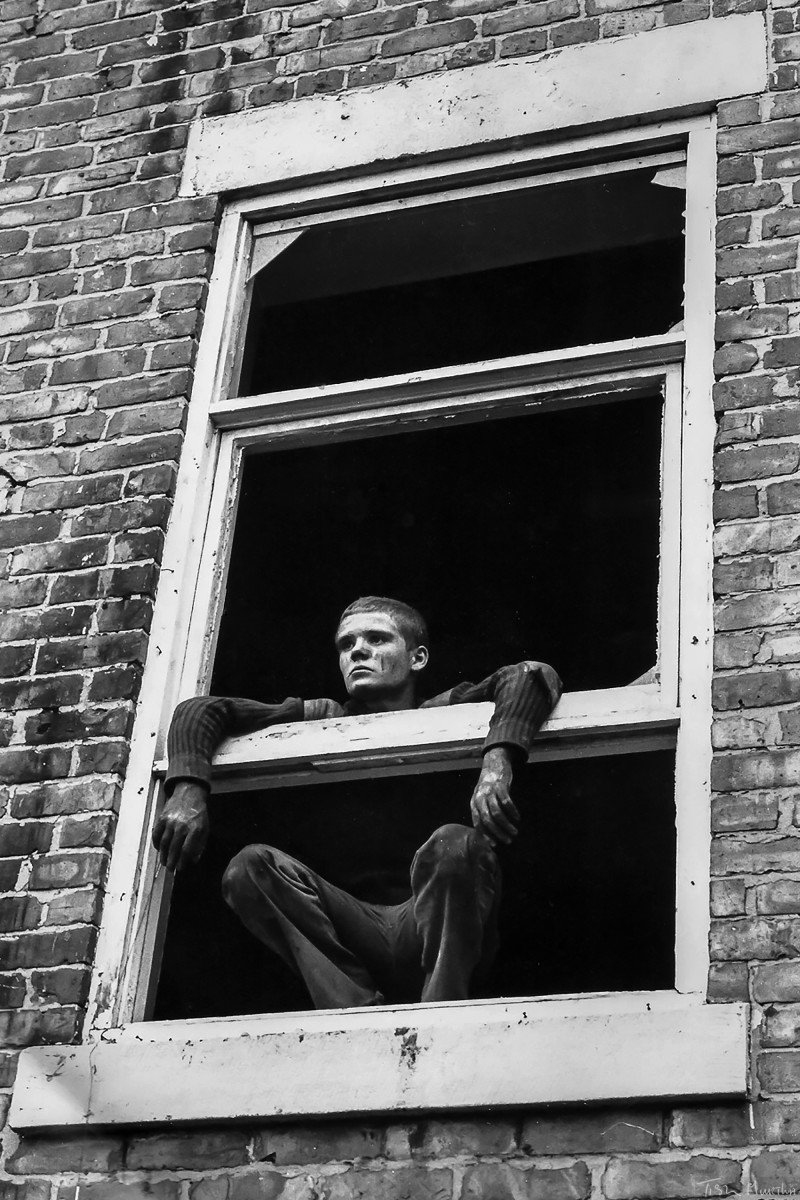Archiver and daughter Ella Murtha discusses the work of her late mother’s powerfully relevant and stunning images from series such as Youth Unemployment and Juvenile Jazz Band to the beautifully nostalgic family portraits, part of thousands of images that are Ella Murtha’s “final gift to her mam’. The Tish Murtha Archive.
What was it like growing how was the relationship between you and your mother?
Well it was a very interesting childhood, but I never knew anything different, so I was probably conceived about the time my mam was doing London by Night, while she was taking all those photos of Soho she was so busy rushing around doing it all, she didn’t actually realise she was pregnant, she thought she way dying and she was only about six stone, she was so thin. She went to the doctors and it turns out she was four months pregnant with me. So I was a total shock, but yeah, I came along the following year.
We stayed in London until I was about three and then we moved back to Newcastle, we moved back to Elsick which is where all the Youth Unemployment & Juvenile Jazz Band pictures were taken. We lived over the road for me nana and me mam started a new project there, which was sort of Elswick revisited but it was all touching on racism and cultural diversity, they are very interesting pictures but it was all to do with racism, there are pictures of national front signs being graffitied. It was Elswick but it was a new Elswick, if that makes any sense.
She would take me to school and everything and then she’d be working on this. It was never exhibited, this was a project that she worked on but it wasn’t actually exhibited anywhere. That all once she had taken me to school. She would be up all night developing pictures and I would come down in the morning and there would just be pictures everywhere, and that was my childhood really. Everywhere we went the camera went, I even had her old one, which didn’t work and she gave that to me and when we went out, like when she went out to take photos and I was with her I had my camera as well.
I mean it didn’t work, but I was there with her you know, taking my pictures as well.
So would you say that you got quite into photography yourself?
Not really! It was almost just like a given because I just sort of never knew anything different. These pictures, like the pictures of sick heads and stuff with tattoos, they were just all over the house, they were like our wallpaper all over our walls, pictures of like, transvestites and stuff it was just normal to me.
As I grew up, I would come home from school with me friends and we would want to get changed and go out, before we could go anywhere she would always have to take a photo. That was just normal to me and it might not be normal to other people but everything in our live was just documented. I think I just took photography for granted really, its not something I claim to be good at or anything, I’m interested in it but I would never claim to be like me mam.
What’s funny is my little boy is really into photography, from the age of about two he started randomly documenting people, when he was in his pram he would have my old phone and I would get home and have all these random pictures of people in the Co-op. I think it might of spiked a generation and gone into Dexter!
It’s obvious why you are doing this project and you say it’s your last gift to her as a daughter. Would you say that you have discovered anything about Tish you didn’t know since starting the archive?
I think I began to understand what she was doing allot more; because like I said I took these photos for granted, it was just normal to me I grew up with them.
What do you remember about the way that she took photographs? On the archive site you talk about the glue sniffer on the way home, I thought that was a great story, what do you remember about when she went up to take that photography and other times?
Well, the camera was always there, you know. I mean that day we were just going down the town but she had her camera around her neck, I was quite distressed because this glue sniffer was very, very creepy and he just kept following and following us, we sat down and then he sat down next to this old man. What was really unusual was she never seemed to get scared or, some of the situations she must have found herself in, she never ever seemed to get put off by that or nervous of scared, she literally would be just about to go and just took the photo and captured that moment, it was very unobtrusive, It’s almost like people didn’t see her.
It’s a hard one to explain because the majority of photos, the Youth Unemployment the juvenile jazz band and things like that I wasn’t there so I can’t comment. But what she did do, my godfather is an actor and he used to, well still is, good friends with Julian Clary and was doing shows, me mam was always his official photography so when he needed new head shots he would come up to Newcastle and we would all go down the park, my cousins would come, and I would bring my little camera that didn’t work and stuff. She would get on with taking those photos and we would aware of it, but they were very different photos because they were for a portfolio. She did the same for Declan Donnelly, she did his head shots and again we went to the park and everything and so that was different.
The types of photos that I remember, like the glue sniffer, that was literally we were getting followed and the camera was there as she just took a quick snap.
Obviously there are allot of your relatives in these photographs, do you think that you view these images allot differently than others, with this connection to the photos, knowing the people in them, does this change your perspective?
It’s bizarre because. The photo with the boy jumping out of the window onto the mattress, that’s my uncle Glen jumping and that’s my uncle Carl waiting behind him waiting for his turn, the lad in the front holding the ventriloquist dummy, that’s my uncle Mark. Straight away I think it’s a brilliant photo, but I see my uncles, just having fun.
It’s almost like an amazing family album. What I find really amazing is that it was only ever really me and me mam, you know, she was a single parent and there was only me. So, me and her had an extremely close relationship, there was only ever the two of us. I had allot of cousins, but there was only the two of us. What I find fascinating is looking at contact sheets. There is one from Halloween at the Murtha house and there is my nana in the back ground at the sink cooking and stuff, and then my auntie Eileen and my uncle Glen, they are sat playing with a little black kitten, and then my auntie Marie is sat carving a turnip, in the corner my uncle Jimmy is sat playing the guitar. That’s a normal day in the Murtha house.
The kitchen was always the hub, and everything happened in the kitchen, I find that fascinating, because it was only ever the two of us. There is the Murtha Christmas, again, it’s really bizarre though, it’s like me mam wasn’t part of it, she must of just been there snapping away and nobody every seemed to know if she was there it’s weird.
Obviously she was part of the family and they trusted her and that’s why the photos are so lovely, I think that’s one of the main things, you know people, they did trust her. She wasn’t an opportunist she wasn’t just going out trying to set up situations. She just photographed what she saw.
For me, I do like the family aspect to it. My uncle Glen he is about nine years younger than me mam, so you see him grow up from being very young. Glen features in a hell of allot of the photos, he is the one jumping out the window, the derelict window with a lad sat looking out, that’s him. Glen seems to feature heavily and it is lovely watching them grow. Obviously the first time I met Glen he was allot older than that, it’s nice to look back.
So what then would you say is the best advice your mum gave you growing up? Has she every said anything that really stuck with you?
Well one of the main pieces of advice in life was “Men just wanted to empty their bollocks on you” and honestly from a very young age I just remembered being appalled and just horrified about all of these bollocks that were just going to get emptied on me. Sorry!!
Haha! Amazing!
I think she was very wary of men and that was her, sort of main advice. She liked being alone, she liked her own company, she was happy. There were men that she was involved with obviously, but I think she was just very, very wary and her advice to me was just. “Beware of them, because they just want to empty their bollocks on you”.
I think that would be a crime! I mean it’s a gift to me mam you because she couldn’t. I don’t think me mam really understood the internet, she was scared of it, this whole thing of men wanting to empty their bollocks on you, I think she was a very, very wary person, she was very defensive but she was also extremely sensitive, she was sensitive to people and you know that was her.
She wouldn’t of accepted help to get this done, this is why they have been left, she has carried them with her everywhere she has gone but it just seemed to me what is the point of them sitting in a box. What if the worst happened and there was a flood or a fire and theses would be lost forever? They are important pieces of history, for so many different reasons like I say all the Newport stuff, I’m discovering things I never knew about and they are actual pieces of history.
You are organising a book now right? Did she leave any notes or information about publishing a book?
She never had information saying she wanted a book, but, what she did with the Youth Unemployment series have all of her notebooks were she wrote about how she planned it, she has changed her mind loads and loads of times but you see the same images and names reoccurring to the point that I can see her thought process and how she planned the exhibition.
She wrote an essay at the time to accompany the series, she spoke to the kids in the pictures and that’s what she wanted, she wanted their voices to be heard. That essay was read out in the House of Commons at the time. So I plan to use these notes were she has planned the photographs, use the notes were she talks about the people in the photographs and use the essay and create a book as much as I possibly can to how she would have wanted it to be.
Me mam loved books; she was a total book person. To have her own book she would have been over the moon with that. The first book is going to be Youth Unemployment.
Is that just because there is more information for that series?
I think that one first really because that’s the one that most people know. The funny thing is that Instagram has been wonderful, it has introduced me mams work to so many people who had never ever heard of her. She was known and people in the photography world did know her, she was taught in the curriculum and things like that, it’s those people, it was Youth Unemployment that they knew.
I think because like you say I have all of the notes, I can make it as accurate to her. At first I was very, very excited about the thousands and thousands of unseen images but when I thought more about it, what right do I have to go through and say this image is better, so initially I have to go with her edit because the one thing that me mam had was an amazing eye, she knew what was good, she knew what she liked, she knew how they wanted to look. I just think it has to be how she would want it.
Being true to her, in the most real way.
It’s the best thing that I can do for her I think. It’s giving her, her voice back. People are going to see these photos and I’m just over the moon.
